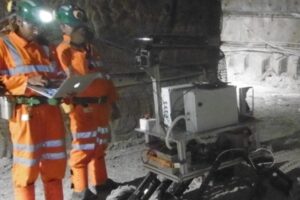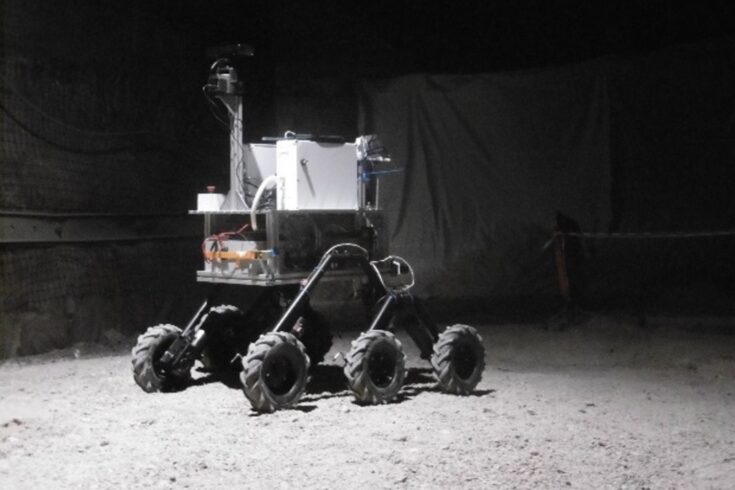Two of the cameras on the Rosalind Franklin Mars rover, which will look for signs of past life on Mars, have been tested at Boulby. The robotic rover, planned for launch in 2028, will look for preserved remnants of biological materials indicating the presence of ancient Martian life.
An analogue of distant planets
The rocky, salty and hostile conditions in Boulby, more than 1km under the ground, mimic the conditions on distant planets. This makes it an ideal place to test equipment that will need to survive extra-terrestrial environments. It is a unique site, and the only deep underground science facility in the UK.
Boulby also contains 250 million-year-old salts which harbour evidence of ancient life. These provide a useful testing ground to prepare the Rosalind Franklin rover to search the three to four billion-year-old mineral deposits on Mars for signs of life.
Testing the Mars rover cameras

Testing a prototype Mars rover with methane and water activity detectors at Boulby Underground Laboratory, for future Mars exploration. Credit: STFC
The rover’s Panoramic Camera (PanCam) and Close-Up Imager (CLUPI) were both tested at Boulby. PanCam will take photographs of the Martian surface to map the terrain and help select the best sites to examine for past life. CLUPI will photograph rock and dust samples which the rover will drill from the ground, and can discern structures smaller than 1mm.
Instrumentation for planetary exploration can be tested in Antarctica, Chile’s Atacama Desert or other remote, hostile environments. Boulby provides an equally interesting and relevant test environment, but is easy and inexpensive to access, allowing scientists to refine and improve instruments over multiple visits.
An international test site
Researchers from NASA, the European Space Agency (ESA) and across the UK have visited Boulby over the last 10 years to test apparatus for experiments on distant planets. Sensors, microscopes and robotics have all been tested at Boulby. In 2017, Matthias Maurer, an ESA astronaut, performed his basic training there before flying to the International Space Station.
Professor Charles Cockell, an astrobiologist at The University of Edinburgh and one of the founders of the astrobiology programme at Boulby, says:
The fact this has become an international test site for advanced instrumentation and planetary technologies, and we have NASA teams coming to the UK to use it as an analogue of extra-terrestrial environments, is a really amazing reflection on STFC and Boulby.

